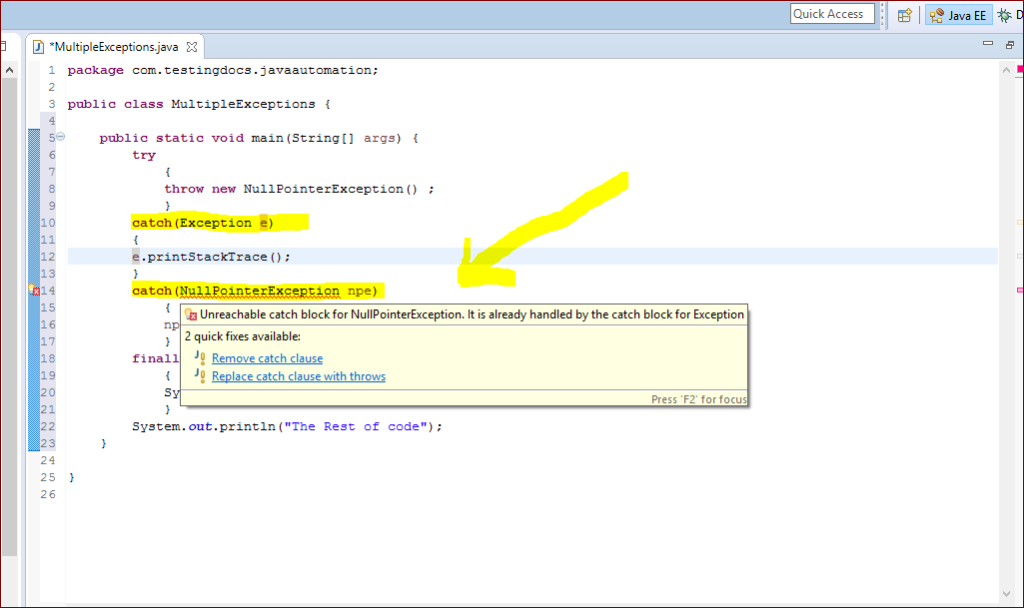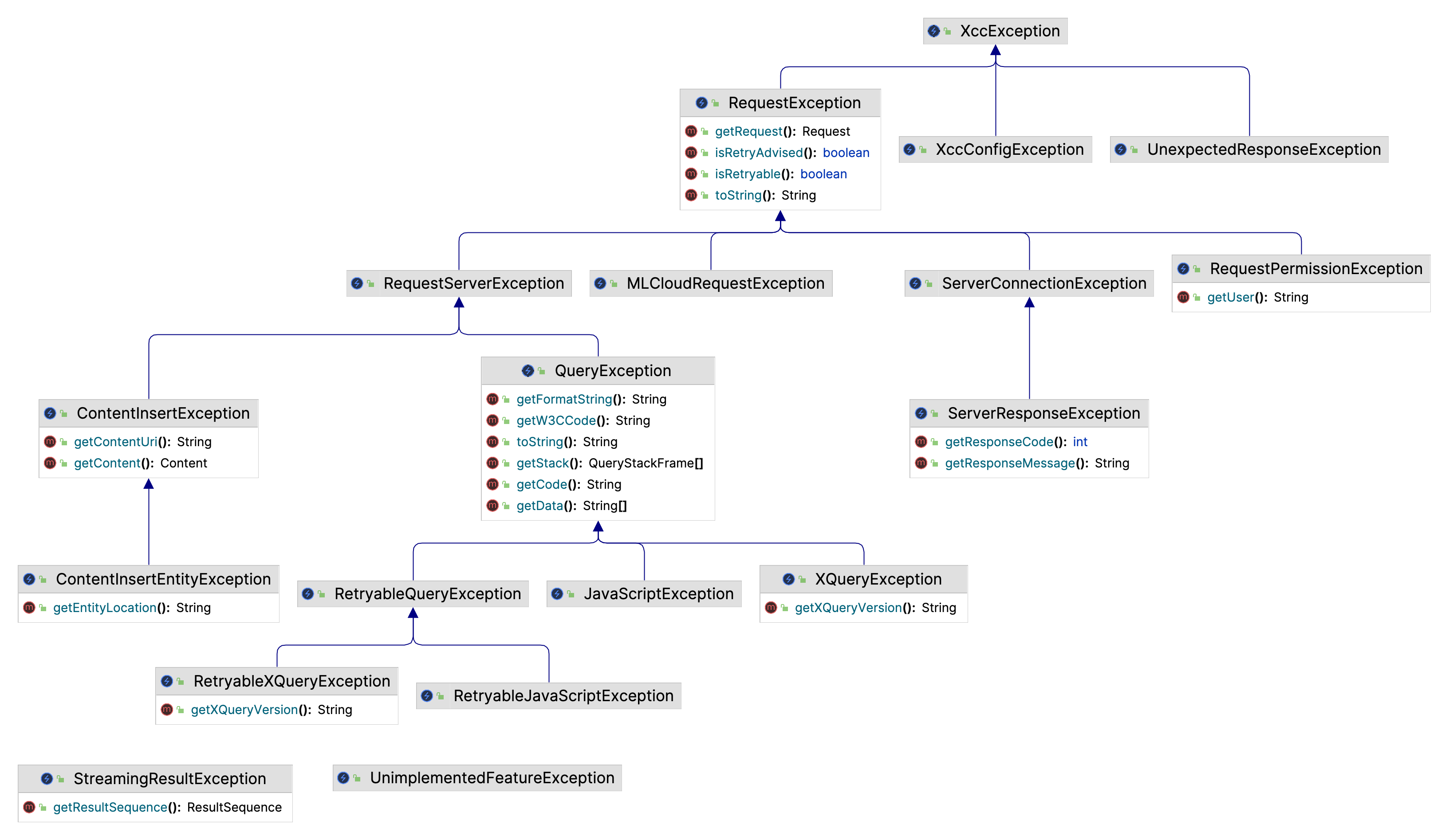Outstanding Tips About How To Write Exceptions In Java

Exceptions can be caught and handled by the program.
How to write exceptions in java. Try { // block of code to try. } consider the following example: When faced with choosing the type of exception to throw, you can either use one written by someone else — the java platform provides a lot of exception classes you can use — or.
And that “dealing” is what. Later, we’ll discuss different types of checked and unchecked exceptions in detail. It is thrown when an exceptional condition has.
How to handle exceptions in java: All you need to do is create a new class and have it extend exception. How can i write custom exceptions?
} catch (exceptiontype1 | exceptiontype2 ex) {. To create a custom exception, we have to extend the java.lang.exception class. However, we sometimes need to create custom exceptions.
This java tutorial guides you on how to create your own exceptions in java. When an exception occurs within a method, it creates an object. A numberformatexception, for example, gets thrown when a.
In the article getting started with exception handling in java, you know how to catch throw. This tutorial focuses on some common java exceptions. The exception class identifies the kind of error that occurred.
Java exceptions cover almost all the general types of exceptions that may occur in the programming. This section describes how to use the three exception handler components — the try, catch, and finally blocks — to write an exception. How to throw exceptions.
(5 answers) closed 4 years ago. An exception is an abnormal condition that occurs in a code sequence during the execution of a program. } catch(exception e) { // block of code to handle errors.
In the java api, there are plenty of places where things can go wrong, and some of these places are marked with exceptions, either in the. You can create your own exceptions in java. If you want an exception that is unchecked, you need to extend runtimeexception.
Edited sep 10, 2016 at 18:07. At run time, that disrupts the normal flow of the program’s instructions. Before you can catch an exception, some code somewhere must throw one.


















